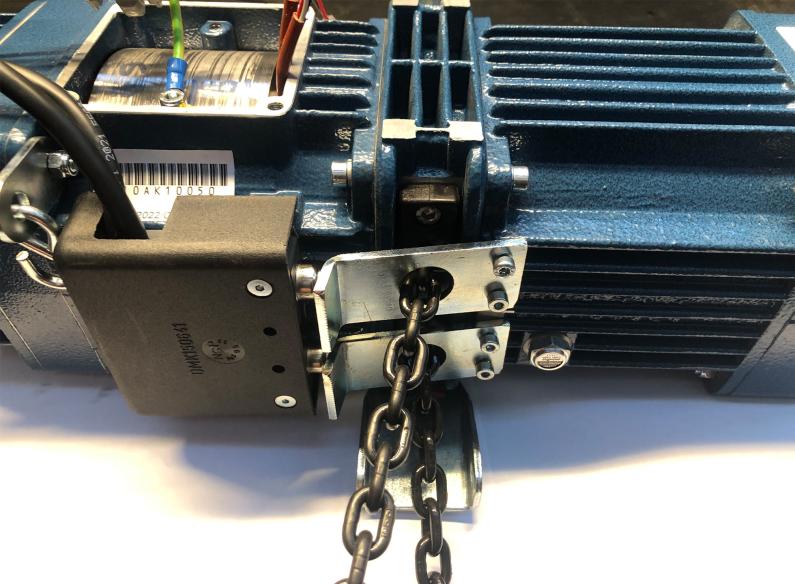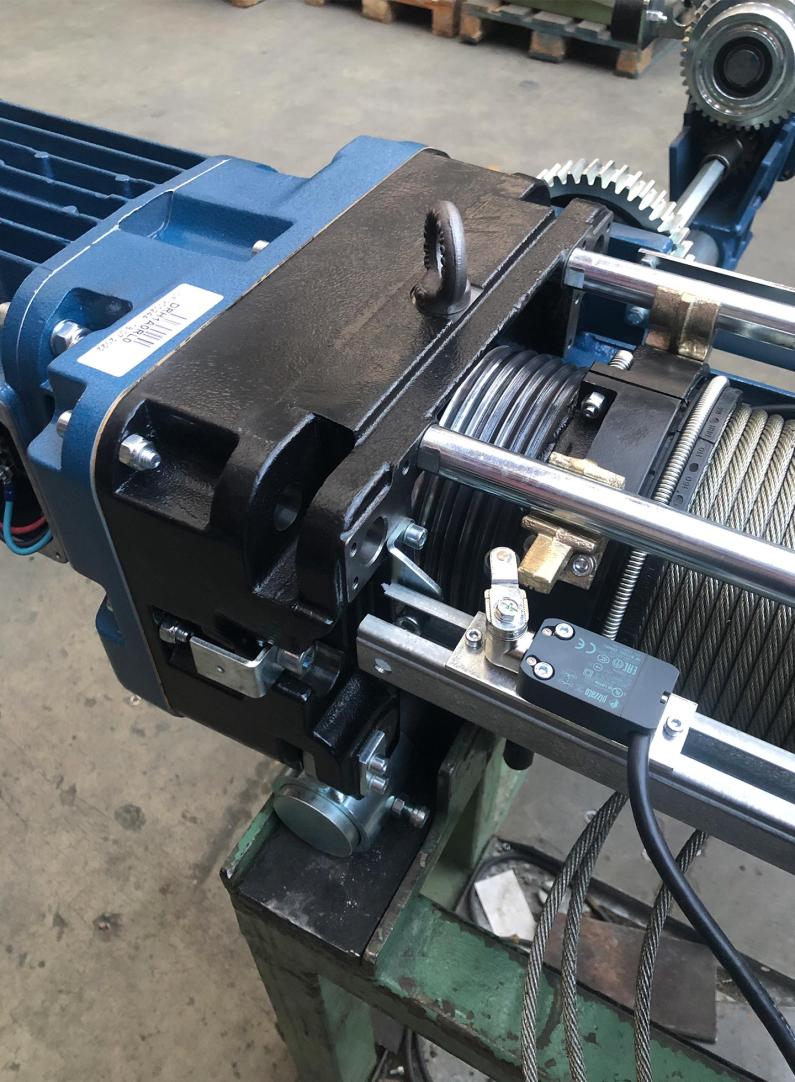Safety devices on hoists
Donati Sollevamenti S.r.l. has operated in the industrial lifting sector since 1930 by supplying a range of safety devices for use on electric hoists.
Electric rope or chain hoists offer many advantages for companies that have to choose a solution for lifting heavy loads. These hoists can be easily operated also in small spaces, the personnel can be easily trained on their safe use and they can be used for both vertical and horizontal movements, in the latter case using a transfer trolley.
The risks of using hoists
As with all other equipment in a company, using hoists always entails risks for the personnel assigned to their operation and for anyone present in their range of action.
This table lists some typical cases of accidents and the related causes:
| Type of accident | Cause |
|---|---|
| Swinging of load following sudden starting or braking | Human error during manoeuvres |
| Collision of the load or hoist with fixed or moving obstacles | Human error during manoeuvres |
| Fall of the load due to the breakage of hooks, ropes or chains | Poor maintenance and/or human error in calculating the weight limits |
| Sudden lowering of the load | Machinery failures or defects |
The standard concerning hoist safety devices
European standard EN 14492-2:2006+A1:2009 contains regulatory references regarding the design, information for use, maintenance and testing of power-driven hoists. The standard was published for the first time in the Official Journal of the EU on 8 May 2007. It was subsequently reviewed twice, in 2009 and 2010.
However, the European standard is not obligatory for manufacturers. Indeed, it only provides indications about the state of the art and the safety level envisaged for this category of products. Manufacturers are therefore free to adopt different technical solutions. However, such solutions must comply with the following conditions:
- comply with safety and health protection requirements;
- ensure a safety level equal to the one that would be reached by complying with European standards.
The safety devices for power driven hoists indicated in the European standard are listed below:
- lifting and lowering height limiter;
- rope loosening limiter;
- lateral sliding limiter;
- load limiter;
- anti-collision device;
- emergency stop.
Lifting and lowering height limiter
The lifting and lowering height limiter is an obligatory safety device.
It functions by means of electric limit switches, torque limiters or safety valves that automatically block the hook at a pre-set height, both in ascent and descent, even if the operator keeps the button pressed.
Rope loosening limiter
The rope loosening limiter is an obligatory safety device.
In situations where the hook is lowered too quickly, the limiter prevents the rope from loosening and causing a whip effect, with the risk of striking the personnel located nearby or of damaging the load and the hoist itself.
It functions thanks to a device that detects when the load has reached the destination surface and stops the movement, keeping the rope taut.
Lateral sliding limiter
This consists of a clutch disc, always engaged and held in position by an adjustable spring. This system allows gradual movement both at start and at top, reducing the risk of the load swinging.
Load limiter
Directive 2006/42/EU sets forth that a load limiter is obligatory for hoists with a load capacity of 1,000 kg or more.
It prevents the weight limits set by the manufacturer of the equipment or by the user from being exceeded.
For example, it functions by means of a system of disc springs that deforms proportionately to the weight of the load. When a given limit is reached, a switch is activated that blocks the lifting operations.
Anti-collision device
The anti-collision device is not obligatory but can be installed if requested by the user.
Its aim is to prevent the collision of the load and of the hoist with fixed or moving obstacles, the crossing of critical areas of the work zone or collision with other hoists that use the same monorail.
Donati uses photoelectric and electromechanical systems. Alternatively, on the market there are also radar, laser or infra-red systems that can detect obstacles also over short distances, instantly blocking the movement of the hoist.
Emergency stop function
Hoists must have an emergency stop function
This function is not a safety device because it does not reduce the risk of accidents at work. Instead, it is a complementary device that intervenes when the action of the other devices is insufficient or not in time.


